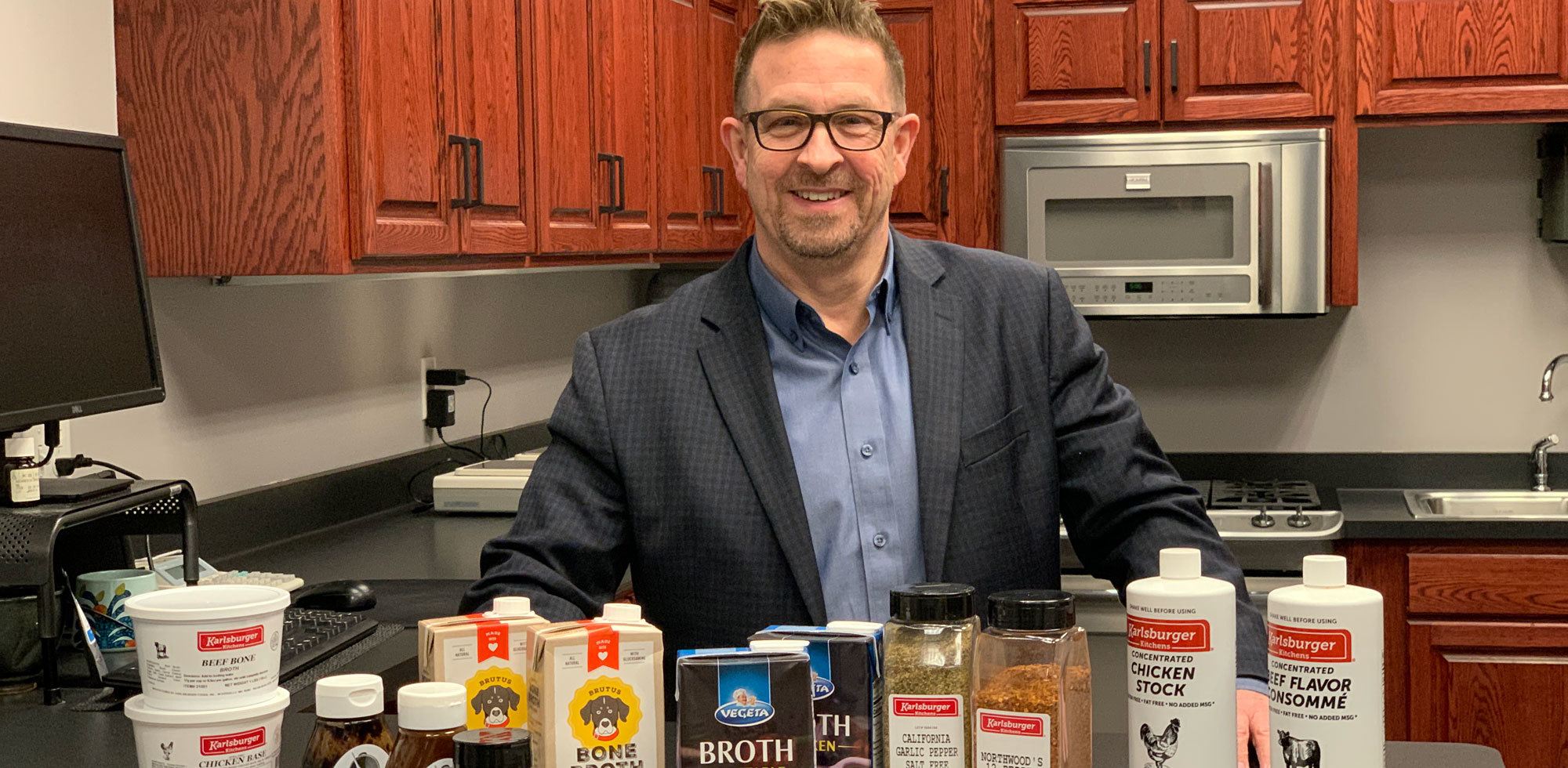
Succession Successes
How three Central Minnesota businesses have survived and even thrived after their owners have decided to move on.
By Lisa Meyers McClintick | Photography by John Linn
In 2005, Bob Thompson heard that Imation, the manufacturing company he managed in Pine City, was going to be sold. He knew the business was at risk of being moved or shuttered, and he knew he needed to do what he could to keep the doors open. The plant employed up to 60 people and provided an economic anchor in a town of 3,100 working residents, many of whom commuted 60 miles each way to the Twin Cities.
The payroll when Thompson purchased the company—which he renamed MINPACK—was $1.5 million. “It was important to the community,” Thompson said, referencing the fact that Pine County has historically had one of the highest unemployment rates in the state. Since 2005, the average production wage of $9.50/hour has risen to about $16.40/hour and MINPACK is among the county’s top five employers. The company makes film and paper products people can find in large retail stores, such as office supplies, tape, promotional items, sporting goods, packages for small items to hang in retail displays, and has a clean room for health care products.
Keeping companies local when an owner is ready to retire or when they’re facing a restructuring or buyout—possibly due to technology or market changes—can be vital to communities, with a ripple effect that extends to housing, education and health care. Sometimes, it can be difficult for banks to completely finance a business transition. And that’s where gap financing through the Initiative Foundation has played an important regional role in enabling new owners to take over and keep the doors open. In 2005, the Initiative Foundation loaned MINPACK about $300,000 for inventory used to make retail packaging, office supplies and more. “We can step in with financing that can help companies through succession and to retain high quality jobs in the community,” said Dan Bullert, business finance manager at the Initiative Foundation.

All in the Family
After steady growth for several years, Monticello’s Karlsburger Foods in Wright County was facing the need for an expansion just as the company’s third-generation owners were yearning to sell. Three serious purchase offers came in for the company, which makes stocks, soup-bases, sauces, gravies and seasonings. But all involved some form of relocation, according to Mike Maher, who has served as company president since 1998.
Maher wanted the company and its 40-some employees and 21 independent contractors to stay in Monticello, where production crews work three shifts to make the equivalent of 2.4 million cups of broth a day.
Maher was able to purchase the business and building in January 2020. A $500,000 loan from the Initiative Foundation covered gaps in bank loans.
The company got its start in the Twin Cities, when Frank Cserpes Sr. began making sausage. It evolved into a manufacturer of soup bases and spice blends for restaurants, schools, nursing homes and private labels and grew enough that they moved from the company’s location in Dayton to a more spacious building Monticello in 2007. Karlsburger Foods is also a proud partner of Feed My Starving Children and other programs that provide meal kits to people in need. In 2019, the company helped produce 600 million meals for children around the world.
That socially focused work appeals to many of Karlsburger’s restaurant customers, some of whom have been purchasing products from the company for decades. Karlsburger staff—many of whom are former chefs—deliver soup bases and seasonings to these customers every two weeks.
Maher has known the Cserpes family since he was a teenager. Their retired father, Frank Cserpes Jr., wanted assurance that loyal customers would be served well and that his family’s business would be in good hands.
“Our relationship, and the ability to communicate, was critical,” Maher said. “There are a lot of moving pieces to buying a company this size.”
For now Maher is focused on inventory software upgrades to increase efficiency with the 500 products they make or pack. He also is looking at brand development and trends and keeping up with the company’s tradition of steady growth. He wants to keep Karlsburger Foods a family company and bring in his three sons: Matthew and Spencer, two experienced Culinary Institute of America chefs who have been working in New York and California, and Justin, who has a master’s degree in supply chain management.
“The long-term plan is for my boys to run this with me as a family business,” he said. “I think this combination will make us a really strong team going forward.”
Local Traditions
In the Chisago County town of Lindstrom, finding a new owner for Gustaf ’s Up North Gallery was important not only to its founder, MaryAnn Jindra, but to a community of 2,500 residents that was eager to keep its identity as “Little Sweden.”
The gallery represents more than three dozen painters, jewelry makers and furniture makers, whose work often mirrors the beauty and heritage of Minnesota and Wisconsin’s northwoods. It is also known for its Scandinavian imports, including tomte figurines, handmade pottery and Swedish textiles. Jindra’s husband, John, runs a framing business on the premises.
In 2017, Jana Lensing had a goose-bump moment after she and Jindra discovered both had a dream—yes, an actual dream—that Lensing would one day take over as the business’s next owner. They began a succession plan shortly after, allowing Lensing more than a year to learn the intricacies of the business and to figure out financing.
A $110,000 Initiative Foundation loan went toward purchasing the gallery’s historic building, which was built in the early 1930s. “I could not have done this without the Initiative Foundation,” said Lensing, who took ownership in October. The project’s lead lender is MidWestOne Bank with additional support from the North Central Economic Development Association.
Lensing wants to keep Jindra’s vision and faithful customers. She also is looking for ways to freshen the building’s curb appeal and create more community interaction, especially in the quieter winter season when there may be 24,000 vehicles a day going past on U.S. Highway 8 versus the 48,000 vehicles when people head to second homes and cabins in the summer.
Lensing is doing what economic experts at the University of Minnesota say is essential: She’s getting solid mentoring from Jindra, and she’s tapping some fresh energy with the talents of her daughters, both in their early 20s, who helped market a 2019 holiday open house that drew thousands of visitors.
Lensing has also taken community leadership seriously. She is a member of the Chamber of Commerce and a participant in the Blandin Community Leadership Program. She doesn’t see herself retiring for many years, but she—and maybe her daughters—hope to keep supporting artists and contributing to Lindstrom’s Swedish vibe. “MaryAnn did this for 45 years. This was her baby,” Lensing said. “It was important for her to know that it’s cared for.”
Main Street Success
How communities can proactively keep their businesses.
For communities that are eager to have their businesses stay put, it helps to be proactive and aware of the transitions that may happen, say experts at the University of Minnesota Extension program, which can help bring buyers and sellers together. The program also can help set up an employee co-operative as another ownership alternative.
“It’s a better bang for your buck to keep existing businesses rather than bring in new ones,” said John Bennett, a community economics educator with Extension’s Center for Community Vitality.
The importance of business succession planning is crucial, especially in light of the wave of Baby Boomers retiring in the next decade. Experts agree there should be a full year to plan a transition. Three years is even wiser for making any needed improvements and to show the kind of sustained profits that are needed to secure loans. It’s also important to have people in place who are willing to be business mentors, especially for the roughly 35 percent of owners who are newcomers to a community, said Jennifer Hawkins, another Extension educator.
The payoff often goes beyond retaining small retailers and larger employers. In most cases, Bennett and Hawkins say, the new owners can take a successful business foundation and then add their own fresh energy and ideas. That typically translates into stronger businesses and growth that can bring in more employees.
“You’re not just keeping a business,” Hawkins said, “You’re growing an economy.”